Dominique Luchart's Blog, page 739
October 14, 2020
Take a breather with the winners of the Wildlife Photographer of the Year competition,

A Siberian tiger just gave the world the hug it needs in 2020. The intimate moment was caught on hidden camera by Sergey Gorshkov, whose photo, “The Embrace,” just won him the prestigious title of Wildlife Photographer of the Year.
In the photo, the endangered tiger stands on its hind legs with its front legs wrapped around a Manchurian fir tree. The big cat’s face is deliciously at peace as it marks the tree with its scent.
“It’s a scene like no other, a unique glimpse of an intimate moment deep in a magical forest,” Roz Kidman Cox, chair of the judging panel, said in an October 13th statement. “Shafts of low winter sun highlight the ancient fir tree and the coat of the huge tigress as she grips the trunk in obvious ecstasy and inhales the scent of tiger on resin, leaving her own mark as her message.”
Her message resonated with judges, who selected the winner from more than 49,000 entries in the prestigious annual competition held by the Natural History Museum in London. “It’s also a story told in glorious colour and texture of the comeback of the Amur tiger, a symbol of the Russian wilderness,” Cox said.
Siberian, or Amur tigers, are a subspecies of tiger with a great comeback story. By the late 1940s, hunting had decimated their population — spread across the Russian Far East, northeastern China, and Korean Peninsula — down to only 20 to 30 individuals left in the wild. In 1947, Russia became the first country to give the tigers legal protection. Today, although threats from poachers and logging remain, up to 550 Amur tigers roam their old territories.
Gorshkov, a founding member of the Russian Union of Wildlife Photographers, took his photo in Russia’s Land of the Leopard National Park. He set up motion-sensor cameras and waited more than 11 months to collect his prize-winning shot, taken with a Nikon Z7 and 50mm f/1.8 lens.
The comeback cat faced some pretty darn cute competition from other creatures caught in a moment of serenity. Photographer Mogens Trolle won the animal portraits category with a photo of an endangered proboscis monkey basking in the sunlight in Sabah, Borneo.
Unexpected pale blue eyelids complement the immaculately groomed auburn hair of ‘the most laid-back character’, a young male proboscis monkey in Sabah, Borneo. Congratulations to Mogens Trolle, this year’s Animal Portraits category winner! pic.twitter.com/D57GEH7UJ2
— Wildlife Photographer of the Year (@NHM_WPY)
Jaime Culebras caught this Manduriacu glass frog hanging out and having a snack in the foothills of the Andes in Ecuador.
Congratulations to this year’s Behaviour: Amphibians and Reptiles winner, @Jaime_Culebras from Spain for his image of a Manduriacu glass frog snacking on a spider in the foothills of the Andes, Ecuador. #WPY56 pic.twitter.com/jXTmmRspdP
— Wildlife Photographer of the Year (@NHM_WPY)
This year’s Young Photographer of the Year, Liina Heikkinen, on the other hand, captured an entirely different kind of mood. Heikkinen won the award for her photo of a snarling young red fox as it tries to keep the remains of a barnacle goose for itself. Replace the feathers with toilet paper, and you’ve got a meme for the early days of pandemic shopping.
“A sense of furtive drama and frantic urgency enlivens this image,” Shekar Dattatri, a wildlife filmmaker and another member of the judging panel, said in a statement. “A great natural history moment captured perfectly.”
 “The Fox That Got the Goose” by Liina Heikkinen won this year’s Young Photographer of the Year award.Photo by Liina Heikkinen / Wildlife Photographer of the Year 2020
“The Fox That Got the Goose” by Liina Heikkinen won this year’s Young Photographer of the Year award.Photo by Liina Heikkinen / Wildlife Photographer of the Year 2020The post Take a breather with the winners of the Wildlife Photographer of the Year competition, appeared first on NEWDAWN Blog.
Apple cuts EarPods and iPhone charger prices by $10 after it stops bundling them,

After months of rumors, Apple announced yesterday that it would be removing wired EarPod headphones and wall chargers from iPhone boxes. The only accessory you get in the box is a USB-C to Lightning cable. Apple is positioning this as an environmentally-friendly move that will reduce carbon emissions and let the company ship more devices on a single pallet. But if you had come to rely on getting a new pair of headphones and a wall charger when you bought a new iPhone, those are now only available as separate purchases.
Thankfully, Apple has made those accessories a little less expensive than they used to be. A set of EarPods with a Lightning connector now costs $19, which is a $10 discount from their previous price. And Apple has also introduced a new $19 20-watt power adapter, discontinuing the older 18-watt charger that cost $29. If you opt to buy both of them, though, that still means you’re paying an extra $38 on top of what you’re already paying for your iPhone 12.
Apple’s decision to remove the headphones and wall charger isn’t totally unexpected, as the company also opted not to pack in a power adapter with this year’s Apple Watch lineup. And it’s not just the iPhone 12 lineup that won’t have the headphones and charger — Apple’s listings for the iPhone 11, iPhone XR, and iPhone SE say those phones only come with a USB-C to Lightning cable as well. So if you’re opting to pick up one of those older phones instead of the iPhone 12, keep in mind that you’ll need to have your own headphones or power adapter or be prepared to buy them separately.
The post Apple cuts EarPods and iPhone charger prices by $10 after it stops bundling them, appeared first on NEWDAWN Blog.
Space calendar 2020: Rocket launches, sky events, missions & more!, ,

LAST UPDATED Oct. 14: These dates are subject to change, and will be updated throughout the year as firmer dates arise. Please DO NOT schedule travel based on a date you see here. Launch dates collected from NASA, ESA, Roscosmos, Spaceflight Now and others.
Watch NASA webcasts and other live launch coverage on our “Watch Live” page, and see our night sky webcasts here. Find out what’s up in the night sky this month with our visible planets guide and skywatching forecast.
Wondering what happened today in space history? Check out our “On This Day in Space” video show here!
October
Oct. 7-8: The Draconid meteor shower peaks.
Oct. 13: Mars is at opposition, which means it’s bigger and brighter than any other time of year. Look for the glowing Red Planet above the eastern horizon after sunset.
Oct. 14: A Russian Soyuz rocket will launch the crewed Soyuz MS-17 spacecraft to the International Space Station with members of the Expedition 65 crew: NASA astronaut Kate Rubins and Russian cosmonauts Sergey Ryzhikov and Sergey Kud-Sverchkov. It will lift off from the Baikonur Cosmodrome in Kazakhstan, at 1:45 a.m. EDT (0545 GMT). Watch it live
Oct. 16: New moon
Oct. 18: A SpaceX Falcon 9 rocket is expected to launch the 13th batch of approximately 60 operational satellites for the company’s Starlink broadband network in a mission designated Starlink 13. It will lift off from Space Launch Complex 40 at Cape Canaveral Air Force Station in Florida, at 8:27 a.m. EDT (1227 GMT). Watch it live
Oct. 20: NASA’s OSIRIS-REx spacecraft will attempt to collect a sample from asteroid Bennu. NASA TV will provide live coverage of the touch-and-go maneuver beginning at 5 p.m. EDT (2100 GMT). Watch it live
Oct. 21: NASA astronaut Chris Cassidy and Russian cosmonauts Anatoli Ivanishin and Ivan Vagner will depart the International Space Station in their Soyuz MS-16 spacecraft. They will undock from the station at 7:33 p.m. EDT (2333 GMT) and land near Dzhezkazgan, Kazakhstan, at 10:58 p.m. EDT (0258 GMT on Oct. 22). Watch it live
Oct. 21: A Rocket Lab Electron rocket will launch the CE-SAT-2B Earth-imaging microsatellite for Canon Electronics and nine SuperDove Earth-imaging nanosatellites for Planet. Rocket Lab nicknamed the mission “In Focus.” It is scheduled to lift off from the Mahia Peninsula in New Zealand at 5:14-6:03 p.m. EDT (2114-2203 GMT). Watch it live
Oct. 21-22: The Orionid meteor shower peaks.
Oct. 22: Just a day before reaching first quarter phase, the moon will be in conjunction with Jupiter at 1:12 p.m. EDT (1712 GMT). That same day, it will be in conjunction with Saturn at 11:42 p.m. EDT (0324 GMT on Oct. 23). Look for the trio in the evening sky.
Oct. 23: A United Launch Alliance Delta IV Heavy rocket will launch a classified spy satellite for the U.S. National Reconnaissance Office. The mission, titled NROL-44, will lift off from Cape Canaveral Air Force Station in Florida, during a 4-hour launch window that opens at 10 p.m. EDT (0200 GMT on Oct. 24). Watch it live
Oct. 25: A Russian Soyuz rocket will launch a Glonass K navigation satellite from the Plesetsk Cosmodrome in Russia.
Oct. 25: A SpaceX Falcon 9 rocket will launch a classified spacecraft payload for the U.S. National Reconnaissance Office. The mission, designated NROL-108, will lift off from Cape Canaveral Air Force Station in Florida. Watch it live
Oct. 29: The waxing, gibbous moon will be in conjunction with Mars at 12:16 p.m. EDT (0325 GMT). Look for the pair above the eastern horizon after sunset.
Oct. 31: Uranus is at opposition. This is the best time of year to view the planet, as it is at its biggest and brightest. If the sky is dark enough, you may be able to spot it with your bare eyes.
Oct. 31: This month has two full moons, which means we’ll have a “Blue Moon” on Halloween. The moon reaches full phase at 10:49 a.m. EDT (1449 GMT).
Also scheduled to launch in October (from Spaceflight Now ):
A SpaceX Falcon 9 rocket will launch the U.S. Air Force’s fourth third-generation navigation satellite, designated GPS 3 SV04, for the Global Positioning System. It will lift off from Cape Canaveral Air Force Station in Florida, in a 4-hour launch window that opens at 9:43 p.m. EDT (0143 GMT on Oct. 3). Watch it live
A Chinese Long March 6 rocket will launch 10 NuSat Earth-imaging satellites for Satellogic, an Argentine satellite manufacturer and remote sensing company. It will lift off from the Taiyuan Satellite Launch Center in China’s Shanxi Province.
A Rocket Lab Electron rocket will launch on its first mission from a new launch pad at the Mid-Atlantic Regional Spaceport at Wallops Island, Virginia. It will launch an experimental mission for the U.S. Air Force’s Space Test Program called Monolith, which carries a space weather instrument. Watch it live
A United Launch Alliance Atlas V rocket will launch a classified spacecraft payload for the U.S. National Reconnaissance Office. The mission, NROL-101, will lift off from Cape Canaveral Air Force Station in Florida. Watch it live
November
Nov. 2: An Arianespace Soyuz rocket will launch the Falcon Eye 2 Earth-imaging satellite for the United Arab Emirates. It will lift off from the Guiana Space Center in French Guiana, at 8:33 p.m. EST (0133 GMT on Nov. 3). Watch it live
Nov. 10: A SpaceX Falcon 9 rocket will launch the Sentinel 6A satellite (also known as Jason-CS A), a joint mission between the European Space Agency, NASA, NOAA, CNES and Eumetsat to continue recording sea level data that was previously collected by the Jason series of satellites. It will lift off from Vandenberg Air Force Base in California, at 2:45 p.m. EST (1945 GMT). Watch it live
Nov. 11-12: The Northern Taurid meteor shower peaks.
Nov. 12: The waning crescent moon will be in conjunction with Venus, the “morning star,” at 4:30 p.m. EST (2130 GMT). Look for the pair above the eastern horizon before dawn.
Nov. 15: New moon
Nov. 16-17: The Leonid meteor shower peaks.
Nov. 19: The waxing crescent moon will be in conjunction with Jupiter at 3:57 a.m. EST (0857 GMT). Shortly afterward, it will be in conjunction with Saturn at 9:51 a.m. EST (1451 GMT). Look for the trio in the evening sky.
Nov. 22: A SpaceX Falcon 9 rocket will launch a Dragon cargo resupply mission (CRS-21) to the International Space Station. It will lift off from Cape Canaveral Air Force Station in Florida. Watch it live
Nov. 24: A Russian Angara-A5 rocket will launch on its second orbital test flight from the Plesetsk Cosmodrome in Russia.
Nov. 25: The waxing, gibbous moon will be in conjunction with Mars at 2:46 p.m. EST (1946 GMT). Look for the pair above the eastern horizon after sunset.
Nov. 30: A penumbral lunar eclipse will be visible from the Americas, Australia and Asia. The moon will begin passing through Earth’s shadow at 2:32 a.m. EST (0732 GMT), and the eclipse will last for 4 hours and 20 minutes.
Nov. 30: The full moon of November, known as the “Beaver Moon,” occurs at 4:30 a.m. EST (0930 GMT).
Nov. 30: A SpaceX Falcon 9 rocket will launch the Turksat 5A communications satellite for the Turkish satellite operator Turksat. It will lift off from Cape Canaveral Air Force Station in Florida. Watch it live
Also scheduled to launch in November (from Spaceflight Now ):
SpaceX will launch its first operational Crew Dragon mission to the International Space Station, called Crew-1, with NASA astronauts Michael Hopkins, Victor Glover and Shannon Walker and Japan’s Soichi Noguchi. The mission will launch from NASA’s Kennedy Space Center on a SpaceX Falcon 9 rocket, at 5:47 a.m. EDT (0947 GMT). Watch it live
A SpaceX Falcon 9 rocket is expected to launch the 14th batch of approximately 60 operational satellites for the company’s Starlink broadband network in a mission designated Starlink 14. It will lift off from Space Launch Complex 40 at Cape Canaveral Air Force Station in Florida. Watch it live
An Arianespace Vega rocket will launch the SEOSat-Ingenio Earth observation satellite and the Taranis scientific research satellite from the Guiana Space Center in Kourou, French Guiana. Watch it live
India’s Polar Satellite Launch Vehicle (PSLV) will launch the RISAT 2BR2 radar Earth observation satellite for the Indian Space Research Organization. It will lift off from the Satish Dhawan Space Center in Sriharikota, India.
December
Dec. 11: A Russian Soyuz rocket will launch the Progress 77P cargo resupply spacecraft to the International Space Station from the Baikonur Cosmodrome in Kasakhstan. Watch it live
Dec. 13-14: The Geminid meteor shower peaks.
Dec. 14: The only total solar eclipse of 2020 will cross through the southern tip of South America. The moon’s shadow will take a similar path to the one it did for the “Great South American Eclipse” of July 2, 2019.
Dec. 16: A SpaceX Falcon 9 rocket will launch the Transporter 1 rideshare mission with dozens of tiny satellites for commercial and government customers. It will lift off from Cape Canaveral Air Force Station in Florida. Watch it live
Dec. 16/17: The waxing crescent moon will be in conjunction with Jupiter at 11:30 p.m. EST (0430 GMT on Dec. 17). A few hours later on Dec. 17, it will be in conjunction with Saturn at 12:20 a.m. EST (0520 GMT). Look for the trio near the southwestern horizon just after sunset.
Dec. 21: The solstice arrives at 4:47 a.m. EST (0947 GMT), marking the first day of winter in the Northern Hemisphere and the first day of summer in the Southern Hemisphere.
Dec. 21: Jupiter and Saturn will make a close approach in the evening sky. The pair will be in conjunction at 8:24 a.m. EST (1324 GMT).
Dec. 21-22: The Ursid meteor shower peaks.
Dec. 23: The waxing, gibbous moon will be in conjunction with Mars at 1:31 p.m. EST (1831 GMT). Look for the pair above the eastern horizon after sunset.
Dec. 29: The full moon of December, also known as the Cold Moon, occurs at 10:28 p.m. EST (0328 GMT).
Also scheduled to launch in December (from Spaceflight Now ):
A Russian Soyuz rocket will launch the 77th Progress cargo spacecraft to the International Space Station. It will lift off from the Baikonur Cosmodrome in Kazakhstan. Watch it live
A United Launch Alliance Delta IV Heavy rocket will launch a classified spy satellite for the U.S. National Reconnaissance Office. The mission, titled NROL-82, will lift off from Cape Canaveral Air Force Station in Florida. Watch it live
India’s Small Satellite Launch Vehicle (SSLV) will launch on its first orbital test flight from the Satish Dhawan Space Center in Sriharikota, India.
An Arianespace Soyuz rocket will launch the second Composante Spatiale Optique (CSO-2) military reconnaissance satellite for the French space agency CNES and DGA, the French defense procurement agency. It will lift off from the Guiana Space Center in French Guiana. Watch it live
A Russian Soyuz rocket will launch approximately 36 satellites into orbit for the OneWeb constellation of communications satellites. The mission, titled OneWeb 4, will launch from the Vostochny Cosmodrome in Russia.
More coming in 2020…
Virgin Orbit’s LauncherOne rocket will launch the ELaNa-20 rideshare mission with 14 cubesats. A Boeing 747 named “Cosmic Girl” will air-launch the rocket over the Pacific Ocean after taking off from the Mojave Air and Space Port in California.
China will launch the Chang’e 5 mission to return samples from the moon. It will be the first lunar sample return mission attempted since 1976.
A Chinese Long March 5B rocket will launch on a test flight with an unpiloted prototype for China’s new human-rated crew capsule, which is designed for future human missions to the moon. This will be the first flight of a Long March 5B rocket. It will lift off from the Wenchang Spacecraft Launch Site in Hainan, China.
India’s Geosynchronous Satellite Launch Vehicle Mk. 2 (GSLV Mk.2) will launch the county’s first GEO Imaging Satellite, or GISAT 1. It is scheduled to lift off from the Satish Dhawan Space Center in Sriharikota, India. The launch was postponed from March 6 due to technical problems with the rocket.
India’s Small Satellite Launch Vehicle (SSLV) will launch on its first commercial mission with four Earth observation satellites for BlackSky Global. It will lift off from the Satish Dhawan Space Center in Sriharikota, India.
A SpaceX Falcon 9 rocket will launch the SXM 7 satellite for SiriusXM. It will lift off from Cape Canaveral Air Force Station in Florida.
Jan. 4: Starliner Orbital Flight Test 2. A United Launch Alliance Atlas V rocket will launch Boeing’s CST-100 Starliner spacecraft on its second uncrewed mission to the International Space Station, following a partial failure in December 2019. It will lift off from Cape Canaveral Air Force Station in Florida.
Feb. 1: Northrop Grumman will use an Antares rocket to launch the Cygnus NG-15 cargo resupply spacecraft to the International Space Station. It will lift off from NASA’s Wallops Flight Facility in Virginia.
March 19: A Russian Soyuz rocket will launch the Progress 78P cargo resupply spacecraft to the International Space Station from the Baikonur Cosmodrome in Kasakhstan.
March 30: SpaceX will launch the second operational flight of its Crew Dragon spacecraft to the International Space Station. Flying on the Crew-2 mission will be NASA astronauts Shane Kimbrough and Megan McArthur, JAXA astronaut Akihiko Hoshide and ESA astronaut Thomas Pesquet.
March: A United Launch Alliance Atlas V rocket will launch the USSF-8 mission for the Space Force’s Geosynchronous Space Situational Awareness Program (GSSAP). It will lift off from Cape Canaveral Air Force Station in Florida.
Q2: A SpaceX Falcon Heavy rocket will launch the USSF-44 mission for the U.S. Air Force. The mission will lift off from NASA’s Kennedy Space Center in Florida and is expected to deploy two undisclosed payloads into geosynchronous orbit.
April 10: A Russian Soyuz rocket will launch the crewed Soyuz MS-18 spacecraft to the International Space Station with Russian cosmonauts Oleg Novitsky, Pyotr Dubrov and Andrei Borisenko. It will lift off from the Baikonur Cosmodrome in Kazakhstan.
June: Boeing plans to launch the first crewed test flight of its CST-100 Starliner spacecraft, which will send Boeing astronaut Chris Ferguson and NASA astronauts Mike Fincke and Nicole Mann to the International Space Station on an Atlas V rocket. The mission will lift off from Cape Canaveral Air Force Station in Florida.
Please send any corrections, updates or suggested calendar additions to hweitering@space.com. Follow Space.com for the latest in space science and exploration news on Twitter @Spacedotcom and on Facebook.
The post Space calendar 2020: Rocket launches, sky events, missions & more!, , appeared first on NEWDAWN Blog.
How real-world violence led Facebook to overturn its most controversial policy,
 I.
I.The biggest trend at platforms this month is changing your mind. Facebook belatedly banned QAnon. Twitter tapped the brakes on retweets. And on Monday, Facebook made one of the biggest policy reversals in its history, banning posts that deny or distort the Holocaust.
Today, let’s talk about the company’s long journey to doing the right thing — and what other platforms might learn from Facebook’s experience.
First, the news. Here’s Sheera Frenkel in The New York Times, featuring a quote from CEO Mark Zuckerberg:
In announcing the change, Facebook cited a recent survey that found that nearly a quarter of American adults ages 18 to 39 said they believed the Holocaust either was a myth or was exaggerated, or they weren’t sure whether it happened.
“I’ve struggled with the tension between standing for free expression and the harm caused by minimizing or denying the horror of the Holocaust,” Mr. Zuckerberg wrote in his blog post. “Drawing the right lines between what is and isn’t acceptable speech isn’t straightforward, but with the current state of the world, I believe this is the right balance.”
The move comes two years after Zuckerberg sparked a controversy by pointing to the platform’s tolerance of Holocaust denial as evidence of its commitment to free speech. (Part of the controversy stemmed from the fact that Zuckerberg, talking to Kara Swisher on her podcast, said that he did not believe Holocaust deniers were “intentionally getting it wrong” — suggesting that Holocaust denial was an honest mistake rather than a malicious ideology in its own right.)
But the 2018 controversy still caught Facebook by surprise because the policy Zuckerberg cited was not a new one. Facebook had defended the rights of Holocaust deniers since at least 2009, when it had weathered an earlier firestorm over hosting anti-Semitic pages. As with the Cambridge Analytica scandal — another story about which the basic facts had long been known, but which suddenly roared back into the spotlight after fresh news reports — seismic shifts in public opinion forced Facebook to rethink long-held values.
In the subsequent two years, Facebook has accelerated efforts to ban hate speech and dangerous organizations from the platform. (Much of that work seems to have been catalyzed by the Christchurch shooting and its aftermath, in which platforms came under significant pressure to ramp up their enforcement efforts.)
That work was comprehensive enough that, if you didn’t know the history, you might assume that Facebook had carved out an exemption to its hate speech policies specifically to allow for Holocaust denial. That wasn’t the case, but it might as well have been, and ultimately it was untenable. And so — after years of civil rights groups asking the company to do so — Facebook finally caved.
II.
(I feel compelled to add a content warning about genocide to this section, which includes an account of my visit to Auschwitz.)
At a time when platforms face more pressure than ever before to remove offensive posts from their services, it can seem strange that Facebook ever permitted Holocaust denial at all. Historically, though, permitting offensive remarks about the Holocaust has been viewed by some groups as a pillar of America’s free-speech tradition. In 1978, the American Civil Liberties Union famously defended the rights of neo-Nazis to march in Skokie, Illinois, which was home to many Holocaust survivors.
The ACLU won the case — and lost 30,000 outraged members in the process. (The march never took place.) I learned about the saga as an undergraduate at Northwestern University, which is 15 minutes away from Skokie by car. As it so happened, my years at Northwestern saw a Holocaust denial controversy of their own. A long-tenured professor of engineering had used his university internet domain to post his denialist views, which he had originally published in a book.
Students, faculty, and alumni all called for the webpage to be removed. But the university president, while condemning the professor’s views, said that to remove the page would represent an inappropriate infringement upon academic freedom. This position generated yet more outrage, and many alumni canceled their donations to the school. But the president held firm.
As a young journalism student, I was regularly exposed to stories about infringements upon free speech around the world. Viewed in this light, I found the president’s actions courageous. He had taken a costly stand in defense of a principle, and there are few things an idealistic young person loves to see more than someone taking a costly and principled stand.
And as a student journalist, I took comfort in the president’s free-speech absolutism. If he would defend the right to speak of a Holocaust denier, I figured, he could also be trusted not to interfere in the affairs of the student newspaper, no matter how often it criticized him.
But the biggest reason I sided with the president as a student, I think, is that the problem of Holocaust denial seemed so abstract. There were no Nazis on my campus; the fascists had not attempted to march in our community in more than 20 years. A steady diet of television shows and Hollywood movies told and retold the story of how America had vanquished the Nazis and liberated Europe. If a handful of moonbat conspiracy theorists wanted to deny the obvious, I thought, what did it matter?
The summer before my final year of school, the Anti-Defamation League sponsored a trip for college newspaper editors to visit Poland and Israel and learn about Jewish history. While in Poland, we visited Auschwitz, and while touring the grounds our guide made a grisly discovery. Without warning, he stooped down to the ground and picked up a handful of soil. In the dirt were small flecks of white, which he identified as fragments of human bone.
He made all of us look at what he had found. I suddenly felt nauseous and averted my eyes. But the guide said he wanted us to look closely, so that if ever anyone denied the Holocaust to us, we would know that they were lying. The history that had seemed so distant to me in Evanston wasn’t even in the past — it was there in the soil and in his hands.
When I returned to school, the problem of Holocaust denial still seemed rather remote to me. But the longer I sat with what I saw there, the less I came to believe in the principle of letting deniers have their say on public platforms. To host denialism, the way the university president had decided to, seemed complicit in a real evil. An evil that poses a threat in the present and the future as well as in the past.
III.
I tell this story because I suspect that I am not the only American whose instinctive defenses of the First Amendment have been increasingly challenged by the rise of right-wing extremism — a good deal of which has been organized on, and amplified by, social networks.
As noxious as the university professor’s webpage was, it was not connected to a directory of 3 billion other human beings. It was not promoted by the university’s recommendation algorithms, as there were none. It did not appear as a series of ironic memes in a central feed to which students were glued. It promoted an abhorrent world view, but the page itself got very little promotion.
It’s difficult to say how much anti-Semites benefited from Facebook’s policy while it lasted. Nor can we say how much they benefited from similarly permissive policies on YouTube, Reddit, and Twitter.
But it seems relatively clear why Facebook ultimately changed its mind. “My own thinking has evolved as I’ve seen data showing an increase in anti-Semitic violence,” Zuckerberg said in his post. This analysis from the Centre for Analysis of the Radical Right played a role in Facebook’s thinking, I’m told. And according to the ADL, anti-Semitic incidents reached an all-time high in 2019. What had started at Facebook as an abstract discussion about speech has become an urgent, tactical discussion about how to thwart real-world acts of terrorism.
Future historians will long debate what precise combination of forces led to the resurgent anti-Semitism and other hate movements we now see around the world. But for far too long, they had an unwitting ally in social networks.
Banning Holocaust denial doesn’t make it go away — Germany does so by law, and far-right forces are still on the rise there (and preaching the gospel of QAnon, to boot). But if you promise to ban hate speech, you have to ban Holocaust denial, too. They have always been one and the same, and the debate over what to do about it was never as abstract or as principled as some of us wanted to believe. I wish I’d seen that sooner. And I wish Facebook had, too.
This column was co-published with Platformer , a daily newsletter about big tech and democracy.
The post How real-world violence led Facebook to overturn its most controversial policy, appeared first on NEWDAWN Blog.
Best Prime Day 2020 deals on gaming,

If you are looking to buy some games that are on your backlist or a new gaming peripheral for your setup, Prime Day 2020 might have some deals worth checking out. Whether you are ready for some new entertainment, are in the market for a gaming mouse, or are looking for some extra storage for your console, here are some of the best gaming deals Amazon is offering during its two-day event.
You probably won’t find any deals on next-gen gaming consoles like the PS5 and Xbox Series X / S. But there will likely be a ton of discounts on their predecessors, the PS4 and Xbox One. And if you are looking to upgrade your TV for your next-gen console, Amazon also has a few TVs worth checking out.
Current Lightning Deals
8Bitdo’s Sn30 Pro Plus Bluetooth controller is $40 at Amazon (usually $50), lower than the best-ever price
PDP’s Sonic-themed wired controller is $18 at Amazon, matching its previous best-ever price
Razer’s BlackWidow Elite mechanical keyboard is $90 at Amazon (usually $170), lower than the best-ever price
NeoGeo’s Arcade Stick Pro Player Pack is $160 at Amazon (usually $230), lower than the best-ever price
 Fire Emblem: Three Houses.
Fire Emblem: Three Houses.Nintendo
Fire Emblem: Three Houses is $40 at Amazon (usually $60), which is lower than the best-ever price
Yoshi’s Crafted World is $40 at Amazon (usually $60)
The Legend of Zelda: Breath of the Wild is $40 at Amazon (usually $60). The game is also available at Best Buy for $40.
Splatoon 2 is $40 at Amazon (usually $60), matching the best-ever price
Super Mario Party is $40 at Amazon (usually $60), matching the best-ever price. The game is also available at Walmart for the same price
Hori’s Nintendo Switch Split Pad (Volcanic Red) is $45 at Amazon (usually $50)
128GB microSD card with a one-year subscription to Nintendo Switch Online is $40 at Amazon (usually $70). Considering the Switch Online service costs $35 per year, paying $10 more for extra Switch storage is an excellent value.
SanDisk’s 400GB microSD card for Nintendo Switch and other supported devices is $43 (usually $57), lower than the best-ever price
 The Last of Us Part II Image: Sony
The Last of Us Part II Image: SonyPlayStation
The Last of Us Part II (standard edition) is $40 at Best Buy (usually $60), matching Amazon’s own price during Prime Day 2020
A one-year PlayStation Plus subscription costs just $30 at CDKeys.com (usually $60)
You can get one-year of PlayStation Now for $42 at Amazon
 Photo by Tom Warren / The Verge
Photo by Tom Warren / The VergeXbox
PowerA’s MOGA mobile gaming clip for Xbox One controllers is $10 at Amazon (usually $15), lower than best-ever price
You can get a used Xbox Elite Black Series 2 controller at GameStop for $120 (usually $160)
 Razer Basilisk V2 wired gaming mouse.Image: Razer
Razer Basilisk V2 wired gaming mouse.Image: RazerPeripherals
HyperX’s Pulsefire Surge wired gaming mouse is $40 at Amazon (usually $55), not the lowest it has ever been but still a good deal on this mouse. The product is also available at Best Buy for the same price
Corsair’s K95 RGB Platinum wired mechanical gaming keyboard with cherry MX speed switches is $160 at Amazon (usually $200) the same keyboard is also available at Best Buy for the same price
Razer’s DeathAdder V2 wired gaming mouse is $56 at Amazon (usually $70), lower than the best-ever price
Razer’s Basilisk V2 wired gaming mouse is $64 at Amazon (usually $80), matching the best-ever price
Razer’s Naga Trinity wired gaming mouse is $60 at Amazon (usually $100)
Razer’s Mamba wireless gaming mouse is $60 at Amazon (usually $130)
Razer’s Viper Ultimate wireless gaming mouse is $100 at Amazon (usually $130), lower than the best-ever price
Razer’s Basilisk Ultimate wireless gaming mouse is $100 at Amazon (usually $150), lower than the best-ever price
Razer’s Basilisk X Hyperspeed wireless gaming mouse is $40 at Amazon (usually $60), lower than the best-ever price
Razer’s Huntsman TE tenkeyless wired gaming keyboard is $90 at Amazon (usually $130), lower than the best-ever price
SteelSeries’ Arctis Pro + GameDAC wired gaming headset is $140 at Amazon (usually $250), lower than the best-ever price
Logitech’s G502 SE Hero wired gaming mouse is $35 at Amazon (usually $80), lower than the best-ever price
Corsair’s Void RGB Elite wired gaming headset is $55 at Amazon (usually $80), lower than the best-ever price
Das Keyboards is knocking 15 percent off all of their mechanical keyboards at Amazon
Storage
Seagate’s 4TB Game Drive for Xbox is $88 (usually $119), lower than the best-ever price
The post Best Prime Day 2020 deals on gaming, appeared first on NEWDAWN Blog.
Best Prime Day deals for upgrading your PC setup,

Have you recently purchased a gaming PC? Are you looking to buy some new equipment for working from home? Amazon’s Prime Day event has a ton of great accessories that will spice up your PC setup.
Whether you’re looking to find a new gaming mouse or keyboard for your rig, a hard drive to bulk up your computer’s storage, or an extra-wide monitor for getting work done, the online retailer has you covered. There are even some motherboards on sale for bringing new life to old systems. Check out our main deal post that features several more product categories.
Current Lightning Deals
Razer’s BlackWidow Elite mechanical keyboard is $90 at Amazon (usually $170), lower than the best-ever price
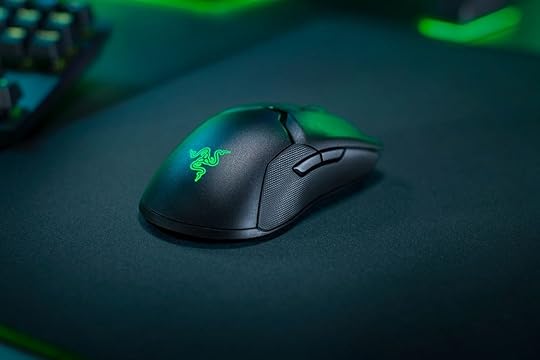 Image: Razer
Image: RazerGaming headsets / mice / keyboards
HyperX’s Pulsefire Surge wired gaming mouse is $40 at Amazon (usually $55), not the lowest it has ever been but still a good deal on this mouse. The product is also available at Best Buy for the same price
Corsair’s K95 RGB Platinum wired mechanical gaming keyboard with cherry MX speed switches is $160 at Amazon (usually $200) the same keyboard is also available at Best Buy for the same price
Razer’s DeathAdder V2 wired gaming mouse is $56 at Amazon (usually $70), lower than the best-ever price
Razer’s Basilisk V2 wired gaming mouse is $64 at Amazon (usually $80), matching the best-ever price
Razer’s Naga Trinity wired gaming mouse is $60 at Amazon (usually $74)
Razer’s Mamba wireless gaming mouse is $60 at Amazon (usually $89)
Razer’s Viper Ultimate wireless gaming mouse is $100 at Amazon (usually $130), lower than the best-ever price
Razer’s Basilisk Ultimate wireless gaming mouse is $100 at Amazon (usually $150), lower than the best-ever price
SteelSeries’ Arctis Pro + GameDAC wired gaming headset is $140 at Amazon (usually $250), lower than the best-ever price
Logitech’s G502 SE Hero wired gaming mouse is $28 at Amazon (usually $50), lower than the best-ever price
Corsair’s Void RGB Elite wired gaming headset is $55 at Amazon (usually $80), lower than the best-ever price
Razer’s Basilisk X Hyperspeed wireless gaming mouse is $40 at Amazon (usually $56), matching the best-ever price
Razer’s Huntsman TE tenkeyless wired gaming keyboard is $90 at Amazon (usually $130), lower than the best-ever price
Das Keyboards is knocking 15 percent off all of their mechanical keyboards at Amazon
Monitors
ViewSonic’s 27-inch XG2760 1440p gaming monitor (VA, G-Sync, 165Hz refresh rate, 1ms response time) is $385 at Amazon (usually $550), lower than the best-ever price
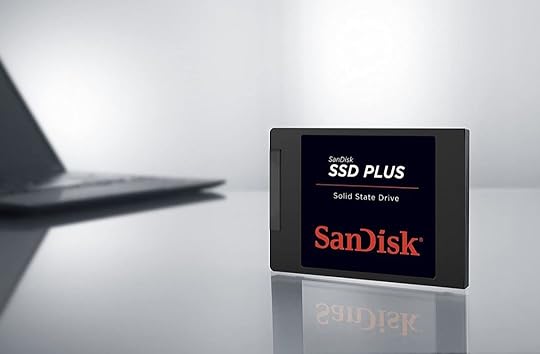 SanDisk 1TB Plus SATA SSD.
SanDisk 1TB Plus SATA SSD.Storage
The Synology 4-bay NAS DiskStation DS920 Plus is down to $440 at Newegg (usually $550), with the offer code 2FTSTECH462 used at checkout
SanDisk’s 1TB Plus SATA SSD is $88 at Amazon (usually $110), lower than the best-ever price
Toshiba’s 4TB Canvio portable hard drive is $80 at Amazon (usually $99), lower than the best-ever price
Samsung’s 1TB 860 Pro SATA SSD is $200 at Amazon (usually $280), lower than the best-ever price
Western Digital’s SN750 2TB NVMe PCIe 3.0 M.2 2280 SSD is $249 at Amazon (usually $310), lower than the best-ever price
LaCie’s 5TB Rugged Mini portable hard drive is $115 at Amazon (usually $165), lower than the best-ever price
LaCie’s 2TB Rugged Mini portable hard drive is $62 at Amazon (usually $96), lower than the best-ever price
Motherboards
The Asus TUF B550M-Plus PCIe 4.0 Micro ATX gaming motherboard that supports AMD’s AM4 CPU sockets is $128 at Newegg (usually $155), Amazon also has the motherboard on sale, but for $162
You can buy MSI’s MAG B550 Tomahawk gaming motherboard plus an AMD Ryzen 7 3800XT CPU bundle for $446 at Amazon (usually $554). A great deal for someone looking to upgrade their motherboard and CPU or looking to build a gaming PC powered by an AMD processor
Gigabyte’s Z390 Aorus Ultra gaming motherboard that supports 8th and 9th-gen Intel CPUs $181 at Amazon (usually $250), beating its previous best-ever price by $19
Gigabyte’s Z390 UD gaming motherboard that supports 8th and 9th-gen Intel CPUs is $95 at Amazon (usually $130), not its lowest price ever, but only $3 more than its best ever price
The Gigabyte X570 Aorus Elite PCIe 4.0 ATX gaming motherboard that supports AMD’s AM4 CPU sockets is $160 at Amazon (usually $195), lower than the best-ever price
Graphics cards
Zotac’s compact GeForce RTX 2060 6GB graphics card is $290 at Newegg (usually $340) when you enter code 2FTSTECH293 at checkout
Power supplies
EVGA’s 750W 80 Plus Gold modular desktop power supply is $100 at Newegg, which is $30 off of its usual price
Memory
Corsair Vengeance 32GB (2 x 16GB) 288-pin DDR4 3600 RAM is $120 at Newegg (usually $140)
The post Best Prime Day deals for upgrading your PC setup, appeared first on NEWDAWN Blog.
You can save $15 on ‘Star Trek: Discovery’ season 2 Blu-ray for Prime Day, ,
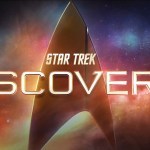
Editor’s note: Amazon reports that this deal has sold out. You can find more Prime Day deals here.
This Amazon Prime Day you can save up to $15 on season 2 of “Star Trek: Discovery,” just in time for season 3. The DVD set is on sale for $21.99 or $34.95 for Blu-ray (down from $29.29 and $50.99 respectively).
Though the show started as a prequel to the original Star Trek, set 10 years before the first show aired, season 3 jumps forward more than nine centuries after the crew of the USS Discovery hurtled into a wormhole at the end of season 2.
[image error]
Star Trek: Discovery Season 2 Blu-ray | Save $15 |
Now $34.95 on Amazon
Get caught up with Lt. Michael Burnham, Spock and the crew of the USS Discovery in season 2 of the CBS All Access Trek sow just ahead of Season 3’s debut this week.View Deal
As we saw in the epic season 3 trailer, the Federation has mostly collapsed after an event ominously referred to as “The Burn” and it’s up to the crew to restore it.
And while you’re looking forward to an exciting new season, you can also look forward to an imminent rewatch of season 2 (with Prime’s 2-day delivery, your DVD set should be in your hands just after the first episode of season 3 airs).
Season 1 is unfortunately not on sale, but if you’re looking to grab the whole collection, you can buy the DVD or Blu-ray set of the first season on Amazon, too.
Follow Kasandra Brabaw on Twitter @KassieBrabaw. Follow us on Twitter @Spacedotcom and on Facebook.
Join our Space Forums to keep talking space on the latest missions, night sky and more! And if you have a news tip, correction or comment, let us know at: community@space.com.
The post You can save $15 on ‘Star Trek: Discovery’ season 2 Blu-ray for Prime Day, , appeared first on NEWDAWN Blog.
Prime Day 2020 ends later today, but these deals are still happening,

Day two of Amazon Prime Day 2020 is underway, and you have until later tonight at 12AM PT / 3AM ET to get in on all of the deals. If you were shopping the Prime Day deals yesterday, you likely saw hefty price cuts on must-have products, like Sony’s WH-1000XM4 wireless noise-canceling headphones, AirPods wireless earbuds, tablets, and more. You still have a chance to get in on those Prime-exclusive deals, plus some news ones that pop up today.
If you want to return your purchase
Amazon’s two-day Prime sale offers great prices, but if you’re thinking ahead, and getting a gift for a friend or relative for the holidays, what if they don’t like it? Won’t it be too late to return it?
No, it won’t. While Amazon usually starts its holiday return policy on November 1st, this year it begins early. You can return most of the items shipped between October 1st and December 31st until January 31, 2021. There are, of course, exceptions; you can find Amazon’s complete return policy here.
We’ve highlighted new deals so you can tell them apart from older ones. Looking for non-Amazon retailers? Check out our anti-Prime Day deals.
To make sure that you see the biggest deals, we’ll be putting limited time Lightning Deals up near the top so you can easily find (and, if you want, buy) those products.
For more deals on fashion, home goods, and other items, check out The Strategist’s roundup here.
Current Lightning Deals
Marshall’s Acton II Wi-Fi and Bluetooth smart speaker is $170 (usually $300)
The 8Bitdo Sn30 Pro Plus Bluetooth controller is $40 (usually $50)
Parasite on Blu-ray is $8 (usually $10)
 Photo by Dan Seifert / The Verge
Photo by Dan Seifert / The VergeAmazon devices
Amazon’s Kindle Paperwhite (with ads, 8GB) is $80 at Amazon (usually $130), beating the previous lowest price of $85
The Amazon Echo Dot (third generation) smart speaker is $19 (usually $40) at Amazon, beating the lowest-ever price by $3)
Amazon’s Fire TV Cube streaming device is down to $80 (usually $120), which beats its previous best price by $10
Amazon Fire HD 10 tablet is $80 (usually $150) at Amazon, which is $20 less than the previous lowest price
Eero’s three-pack of mesh Wi-Fi routers is $174 at Amazon (usually $249). It’s not as low as the best-ever $160 price, but it’s still a rare deal.
A single Eero mesh Wi-Fi router is $69 at Amazon (usually $99). This matches the lowest price yet.
Ring’s Stick Up Cam smart camera with a free Echo Dot is $80 at Amazon (usually $100), beating the previous lowest price of $85
You can get a Ring Video Doorbell 3 and an Amazon Echo Show 5 together for $150 at Amazon (usually $290 together)
Amazon’s Echo Studio smart speaker is $150 (usually $200) at Amazon, beating the lowest price yet
 Photo by Nick Statt / The Verge
Photo by Nick Statt / The VergeCheap gadget deals
Amazon is offering Prime members an extra 20 percent discount on pre-owned, used, and open-box products in the Amazon Warehouse. You should check out the selection of tech you might be interested before spending more on a new product.
PowerA MOGA phone and Xbox One controller clip is $10 (usually $15)
Chaimberlain’s MyQ smart Wi-Fi garage door opener is $16 (usually $40)
 Photo by Chris Welch / The Verge
Photo by Chris Welch / The VergeHeadphone deals
Microsoft’s Surface Headphones 2 are $200 (usually $300) at Amazon
The new Sony WH1000X-M4 wireless noise-canceling headphones are $298 at Amazon (usually $350) and include a free $25 gift card
Bose’s QuietComfort 35 Series II wireless noise-canceling headphones are $200 at Amazon (usually $300), which is $79 less than their previous best price
Beats Powerbeats Pro wireless earphones are $175 at Amazon (usually $250), falling $25 below their lowest price yet
Apple AirPods with a wired charging case are $115 at Amazon (usually $125), beating the lowest price by $10
Amazon’s Echo Buds are $80 at Amazon (usually $130), beating the lowest price yet by $10
Razer Opus wireless noise-canceling headphones are $180 at Amazon (usually $200), matching their best-ever price
Sony’s WHXB900N wireless headphones are $123 at Amazon (usually $248), matching the lowest price we’ve seen yet
Sony’s WHCH710N wireless headphones are $88 at Amazon (usually $200), beating the previous lowest price by $10
 Fire Emblem: Three Houses for Nintendo Switch rarely gets a discount, but it’s $20 off.
Fire Emblem: Three Houses for Nintendo Switch rarely gets a discount, but it’s $20 off.Gaming
Fire Emblem: Three Houses (physical or digital) for Nintendo Switch is $40 at Amazon (usually $60), beating the previous best price by $5
You can get a one-year family subscription to Nintendo Switch Online and a 128GB microSD card for $40. Considering the Switch Online service costs $35 per year, paying $5 more for extra Switch storage is an excellent value.
The Last of Us Part II is $40 at Amazon (usually $60)
Yoshi’s Crafted World (physical or digital) for Nintendo Switch is $40 at Amazon (usually $60). The lowest was $30, so this is not the best but still a good deal.
The Legend of Zelda: Breath of the Wild (physical or digital) for Nintendo Switch is $40 at Amazon (usually $60). The lowest was $30, so not the best but still a good deal.
Splatoon 2 (physical or digital) for Nintendo Switch is $40 at Amazon (usually $60), matching the lowest price yet
You can get a one-year subscription to PlayStation Now game streaming service for $42 at Amazon (usually $60)
Genki’s Covert Dock for Nintendo Switch (with support for other USB-C devices) is $60 at Amazon (usually $75, clip the on-page coupon to save)
Genki’s Bluetooth audio USB-C adapter for the Nintendo Switch is $40 at Amazon when you clip the on-page discount (usually $50)

Movies and TV show deals
The Matrix Trilogy on 4K UHD Blu-ray is $39 at Amazon until 12PM ET, 10/14
Avatar & Legend of Korra: Complete Series Collection on Blu-ray is $45 at Amazon until 11AM ET, 10/14
Cowboy Bebop: The Complete Series on Blu-ray is $18 at Amazon until 11AM ET, 10/14
Samurai Champloo: The Complete Series on Blu-ray is $20 at Amazon until 11AM ET, 10/14
The Dark Knight Trilogy on 4K UHD Blu-ray is $39 at Amazon until 12PM ET, 10/14
The Mummy Ultimate Trilogy on 4K UHD Blu-ray is $35 at Amazon
Friends: The Complete Series on Blu-ray is $55 at Amazon until 11AM ET, 10/14
Indiana Jones: The Complete Adventures on Blu-ray is $30 at Amazon until 12PM ET, 10/14

Gadget deals
Zendure’s SuperTank 100W portable battery bank is $83 at Amazon (usually $130) if you use the on-page coupon, beating the previous best price by almost $20. And if you purchase two Zendure products, you’ll get 15 percent off in the cart.
DJI’s Mavic Mini combo that includes several accessories is $400 at Amazon, which is $100 less than the usual price
The DJI Osmo Pocket with a charging case is $300 at Amazon, which is $98 less than its usual price
DJI’s Osmo Action camera is $200 at Amazon, falling $39 below its usual cost
DJI’s Osmo Mobile 3 gimbal with accessories is $105 at Amazon, which is $13 less than the usual price
Samsung’s Galaxy Tab A (10.1-inch, 2019, 64GB) is $180 at Amazon (usually $280), matching the best deal we’ve seen yet
The 8-inch Samsung Galaxy Tab A with 32GB of storage is $100 (usually $118) at Amazon
Satechi’s USB-C hub that supports two 4K 60Hz monitors is $35 at Amazon (usually $50), beating the previous lowest price of $49
 Photo by Amelia Holowaty Krales / The Verge
Photo by Amelia Holowaty Krales / The VergePC peripherals
Razer’s Mamba wireless gaming mouse is $60 at Amazon (usually around $90), not quite beating its $55 best price, but coming close enough to warrant telling you about it
Razer’s DeathAdder V2 wired gaming mouse is $56 at Amazon (usually $70), beating the best price by $10
Razer’s Naga Trinity wired gaming mouse is $60 at Amazon (usually $74), costing $5 over the best price yet, but it’s still a good deal
Razer’s Huntsman TE tenkeyless wired gaming keyboard is $90 at Amazon (usually $130), beating the previous best deal by $10
Razer’s Viper Ultimate wireless gaming mouse is $100 at Amazon (usually $130), matching the lowest price
Razer’s Basilisk Ultimate wireless gaming mouse is $100 (usually $150), falling below the lowest price by $20
Monitors
Dell’s 27-inch S2721HGF curved 1080p gaming monitor (G-Sync, VA panel, 144Hz refresh rate) is $210 at Amazon. This model fluctuates in price between $220 and $300.
ViewSonic’s 27-inch XG2760 1440p gaming monitor (G-Sync, 165Hz refresh rate, 1ms response time) is $385 at Amazon (usually $600), down from its previous best of $418
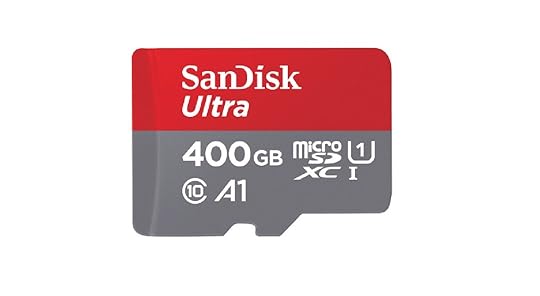
Internal / external storage
SanDisk’s 1TB Plus SATA SSD is $88 at Amazon (usually $110), down from its previous best price of $99
Crucial P5 1TB NVMe SSD is $120 at Amazon (usually $150)
Toshiba’s 4TB Canvio portable hard drive is $80 at Amazon (usually $98), down from its previous best price of $85
Samsung’s 1TB 860 Pro SATA SSD is $200 at Amazon (usually $280), down from its previous best price of $233
LaCie’s 5TB Rugged Mini portable hard drive is $115 at Amazon (usually $165), down from its previous best price of $137
LaCie’s 2TB Rugged Mini portable hard drive is $62 at Amazon (usually $95), $15 cheaper than the best deal we’ve seen yet
SanDisk’s 400GB microSD card that works with Nintendo Switch and other supported products is $45 at Amazon (usually $60), matching the lowest price yet
PNY’s 512GB microSD card is $70 (usually $100) at Amazon
Seagate’s 4TB Game Drive for Xbox is $88 at Amazon (usually $105), beating the previous lowest price by $12
 Photo by Chaim Gartenberg / The Verge
Photo by Chaim Gartenberg / The VergePhone deals
Motorola’s Edge (unlocked with 256GB of storage and support for CDMA/GSM carriers ) is $495 at Amazon. It fluctuates in price between $500 and $700, but it’s locked to $495 through Prime Day.
The Moto G Stylus (128GB storage, unlocked with full carrier support) is $240 at Amazon. It usually costs $300.
Samsung’s Galaxy A71 with 5G support (unlocked, 128GB) is $420 at Amazon (usually $500), beating its lowest price
Samsung’s Galaxy S20 (unlocked, 128GB) is $750 at Amazon (usually $1,000), beating the previous best price
Samsung’s Galaxy S20 Plus (unlocked, 128GB) is $900 at Amazon (usually $1,200), beating the previous lowest price
The Samsung Galaxy S20 Ultra (unlocked, 128GB) is $1,050 at Amazon (usually $1,200), beating the lowest price
The Google Pixel 4 (unlocked, 64GB) costs $449 at Amazon (usually $600), beating its previous best price by $50
The Google Pixel 4 (unlocked, 128GB) costs $549 at Amazon (usually $899), also beating the lowest price on record by $50
The Google Pixel 4 XL (unlocked, 128GB) costs $649 at Amazon (usually $999), beating the lowest price yet by $50
The Moto G Power (32GB storage, unlocked with GSM/CDMA carrier support) is $135 at Amazon, beating its usual price of around $200
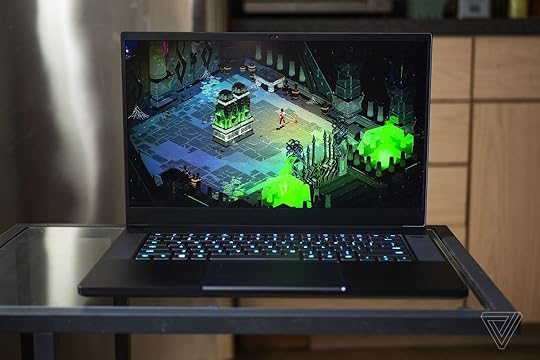 Photo by Cameron Faulkner / The Verge
Photo by Cameron Faulkner / The VergeWindows laptops
Razer’s Blade 15 Advanced (i7-10875H, RTX 2070 Super Max-Q, 300Hz refresh rate, 16GB RAM, 512GB SSD) is $2,100 at Amazon (usually $2,600), beating the previous best price by about $100
Razer’s Blade 15 Base edition (i7-10750H, GTX 1660 Ti, 144Hz refresh rate, 16GB RAM, 256GB SSD) is $1,300 at Amazon (usually $1,600), down from its previous best of $1,466
Asus ZenBook Duo UX481 is $1,000 at Amazon, below its usual price at $1,150

Tablet accessories
Brydge’s Pro 12.9 Bluetooth keyboard for the iPad Pro (2018, 2020) is $100 at Amazon (usually $169), beating the lowest price by $30
Brydge’s Pro Plus 12.9 Bluetooth keyboard with a trackpad for iPad Pro (2018, 2020) is $160 at Amazon, which is well below its usual price of $230
Brydge’s Pro Plus 11.0 with a trackpad for the smaller iPad Pro (2018, 2020) is $140 at Amazon, which is $60 less than its usual price
If you have the latest 10.2-inch iPad, Brydge’s 10.2 Bluetooth keyboard for that size of tablet is $80 at Amazon (usually $130), which is $20 cheaper than the previous best price
The 2017 iPad Pro and the iPad Air (2019) are 10.5-inch tablets. If you have either of those, Brydge’s 10.5 Bluetooth keyboard will fit just fine. It’s just $60 at Amazon, which is just a little less than its usual $65 price.
The post Prime Day 2020 ends later today, but these deals are still happening, appeared first on NEWDAWN Blog.
October 13, 2020
Disney’s major reorganization is good news for anyone who loves Disney Plus,

Streaming was always going to be a big part of Disney’s next phase, but now it’s clear that Disney Plus is truly the company’s future.
Disney announced a “strategic restructuring” of its media and entertainment divisions yesterday that position the company to more aggressively meet its audience where they are — at home, streaming shows and movies to their TV. Under the new organization, Kareem Daniel, an executive who oversaw consumer products, games, and publishing, is moving from that division to oversee all of Disney Plus. It may seem odd to place a non-streaming executive in charge of streaming, but the shift seems to signal that Disney wants a less traditional approach to its entertainment and media businesses, with a focus on “delivering and monetizing our great content in the most optimal way possible.”
The goal is to empower individual studio and network chiefs to decide where their programming should go “as opposed to somehow having it pre-determined that a movie is destined for theaters or a TV show is destined for ABC,” Disney CEO Bob Chapek told CNBC.
One of the biggest differences between Disney’s public strategy before and after this reorganization is the extra emphasis on producing exclusives for streaming services, especially Disney Plus. The company noted in a press release that with the new reorganization structure, three content groups will be responsible for producing and delivering content “with the primary focus being the company’s streaming services.” That potentially means that Disney could give studio and network heads even more power throughout the calendar year, letting them decide where they believe certain projects should live, whether that be on Disney Plus, theaters, or on television.
Disney Studios chairman Alan Horn hinted at this approach back in February. During a roundtable with The Hollywood Reporter, Horn spoke about how Studios could use Disney Plus as a zone for movies that they were proud of but were unlikely to perform as well at the box office. Smaller films like McFarland, USA ($45 million worldwide) or Queen of Katwe ($10.3 million worldwide) can potentially find a larger audience on Disney Plus, while films with huge box office potential like The Lion King, Captain Marvel, or a new Star Wars installment can get theatrical releases. As its press release pointed out, the creatives overseeing Disney’s biggest franchises “will focus on developing and producing original content for the company’s streaming services.”
This reorganization has been in the works for a while, Chapek told CNBC — the pandemic just accelerated it. Streaming is now one of the only major revenue sources for the company as parks remain closed and theatrical releases are pushed back. The shakeup is a public display of confidence in Disney’s new and rapidly growing business — one that even Netflix co-CEO Reed Hastings found himself congratulating a few months ago.
Disney essentially now has two areas of revenue that it’s focused on growing: Disney Parks (a division that also includes merchandise and other non-entertainment products) and the new Media & Entertainment Distribution division. While it’s not too difficult to imagine parks rebounding in the years to come post-COVID, it’s the company’s media and entertainment sector, and specifically streaming, that represents Disney’s opportunity for immediate growth.
The future of Disney is riding on streaming. The theatrical landscape is dire, parks in the US and other regions will remain closed for the foreseeable future, and cruises aren’t likely to be popping anytime soon. Streaming, on the other hand, is growing faster than even Disney could anticipate. Disney now has more than 100 million subscribers across its various streaming platforms, with more than 60 million of those subscribers coming from Disney Plus. Chapek called the figures “a significant milestone and a reaffirmation of our DTC (direct-to-consumer) strategy, which we view as key to the future growth of our company,” on the company’s most recent quarterly earnings call.
Disney’s biggest investors and analysts agree. Dan Loeb, an activist investor whose Third Point Capital is one of Disney’s largest shareholders, even asked Chapek to end Disney’s annual $3 billion dividend in an effort to direct more capital to creating Disney Plus content. It’s an unusual move for an activist investor to ask a company to not pay out money they’re entitled to, according to CNBC, but Loeb noted that “by reallocating a dividend of a few dollars per share, Disney could more than double its Disney+ original content budget.”
“Disney has already proven that Disney+ is a big enough lifeboat to help the company reach the other side of this media landscape upheaval in a strong position,” Michael Nathanson, senior analyst at MoffettNathanson, wrote in a note this morning.
Last week, Netflix co-CEO Ted Sarandos told Variety that while he was excited by new competitive entrants like Disney Plus, he believes “everyone’s level of commitment still needs to be defined” adding that “there’s a still a thing called Disney Plus” that’s separate from Disney as a whole. That may have been true in the months before the pandemic, but with the new public reorganization and comments from Chapek, it’s clear that Disney as a whole is very, very much Disney Plus.
The post Disney’s major reorganization is good news for anyone who loves Disney Plus, appeared first on NEWDAWN Blog.
Best Prime Day 2020 deals on gaming,

If you are looking to buy some games that are on your backlist or a new gaming peripheral for your setup, Prime Day 2020 might have some deals worth checking out. Whether you are ready for some new entertainment, are in the market for a gaming mouse, or are looking for some extra storage for your console, here are some of the best gaming deals Amazon is offering during its two-day event.
You probably won’t find any deals on next-gen gaming consoles like the PS5 and Xbox Series X / S. But there will likely be a ton of discounts on their predecessors, the PS4 and Xbox One. And if you are looking to upgrade your TV for your next-gen console, Amazon also has a few TVs worth checking out.
Current Lightning Deals
Razer’s BlackWidow Elite mechanical keyboard is $90 at Amazon (usually $170), lower than the best-ever price
NeoGeo’s Arcade Stick Pro Player Pack is $160 at Amazon (usually $230), lower than the best-ever price
 Fire Emblem: Three Houses.
Fire Emblem: Three Houses.Nintendo
Fire Emblem: Three Houses is $40 at Amazon (usually $60), which is lower than the best-ever price
Yoshi’s Crafted World is $40 at Amazon (usually $60)
The Legend of Zelda: Breath of the Wild is $40 at Amazon (usually $60). The game is also available at Best Buy for $40.
Splatoon 2 is $40 at Amazon (usually $60), matching the best-ever price
Super Mario Party is $40 at Amazon (usually $60), matching the best-ever price. The game is also available at Walmart for the same price
128GB microSD card with a one-year subscription to Nintendo Switch Online is $40 at Amazon (usually $70). Considering the Switch Online service costs $35 per year, paying $10 more for extra Switch storage is an excellent value.
SanDisk’s 400GB microSD card for Nintendo Switch and other supported devices is $45 (usually $57), lower than the best-ever price
 The Last of Us Part II Image: Sony
The Last of Us Part II Image: SonyPlayStation
The Last of Us Part II (standard edition) is $40 at Best Buy (usually $60), matching Amazon’s own price during Prime Day 2020
A one-year PlayStation Plus subscription costs just $30 at CDKeys.com (usually $60)
You can get one-year of PlayStation Now for $42 at Amazon
 Photo by Tom Warren / The Verge
Photo by Tom Warren / The VergeXbox
You can get a used Xbox Elite Black Series 2 controller at GameStop for $120 (usually $160)
 Razer Basilisk V2 wired gaming mouse.Image: Razer
Razer Basilisk V2 wired gaming mouse.Image: RazerPeripherals
Razer’s Basilisk X Hyperspeed wireless gaming mouse is $40 at Amazon (usually $60), lower than the best-ever price
Razer’s DeathAdder V2 wired gaming mouse is $56 at Amazon (usually $70), lower than the best-ever price
Razer’s Basilisk V2 wired gaming mouse is $64 at Amazon (usually $80), matching the best-ever price
Razer’s Naga Trinity wired gaming mouse is $60 at Amazon (usually $100)
Razer’s Huntsman TE tenkeyless wired gaming keyboard is $90 at Amazon (usually $130), lower than the best-ever price
Razer’s Mamba wireless gaming mouse is $60 at Amazon (usually $130)
Razer’s Viper Ultimate wireless gaming mouse is $100 at Amazon (usually $130), lower than the best-ever price
Razer’s Basilisk Ultimate wireless gaming mouse is $100 at Amazon (usually $150), lower than the best-ever price
SteelSeries’ Arctis Pro + GameDAC wired gaming headset is $140 at Amazon (usually $250), lower than the best-ever price
Logitech’s G502 SE Hero wired gaming mouse is $35 at Amazon (usually $80), lower than the best-ever price
Corsair’s Void RGB Elite wired gaming headset is $55 at Amazon (usually $80), lower than the best-ever price
Das Keyboards is knocking 15 percent off all of their mechanical keyboards at Amazon
Storage
Seagate’s 4TB Game Drive for Xbox is $88 (usually $119), lower than the best-ever price
The post Best Prime Day 2020 deals on gaming, appeared first on NEWDAWN Blog.



